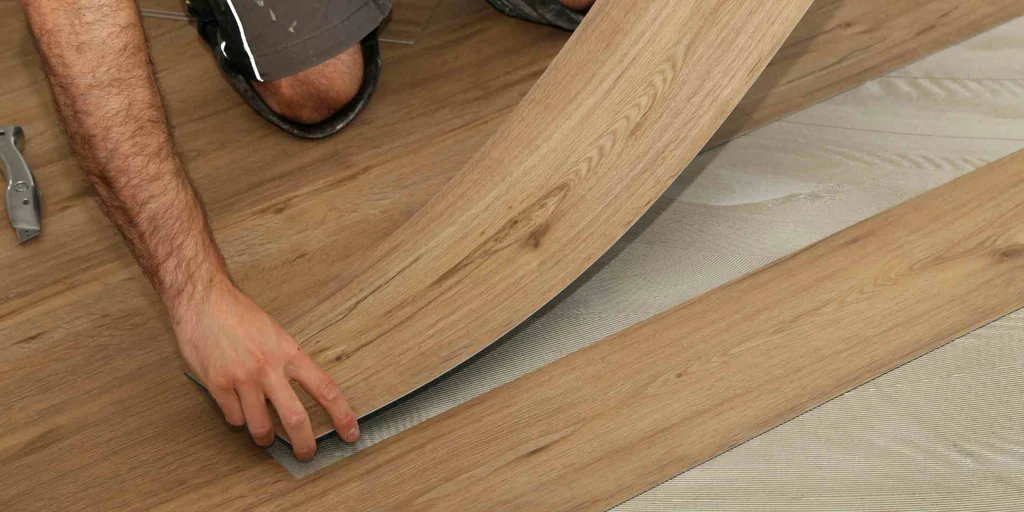The flooring must be hard enough to hold up to spills, yet gentle enough for the kids to run around on, easy to clean and not susceptible to mold growth.
This is perfect for areas that are very used frequently such as bathrooms and kitchens and humid areas such like basements. Ceramic or porcelain tiles are durable and very easy to keep clean.
Hardwood
Hardwood floors are a beautiful addition to your home that can be matched to any decor. Their inherent toughness makes them rip-and-tear resistant, and they’re also hypoallergenic; and hardwoods can be sanded and refinished many times during their lifetime for their long-term lustre.
Select from many domestic and exotic hardwood species for your flooring project, including the durable hardwood species like oak and maple, which come with an array of colors and grains. Hickory is one of the toughest, dramatic domestic woods with shock resistance and density advantages that can be used in high traffic areas.
Engineered hardwood is a bit more durable than natural wood and it is great for bathroom and basement installations. It’s also more water resistant and has higher humidity tolerance than solid wood.
Tile
Tile floors are an affordable, strong option that won’t crack, chip or stain – and also comes in a vast array of designs to match any style. When put in place and kept in good condition, it’s a house value.
There are different types of ceramic, porcelain, stone and metal tiles which are of various sizes, thickness, ratings and colors.
Porcelain tiles are made from clay that has been heated to harden and resist moisture which is excellent for a place where people visit frequently like bathrooms or hallways. There are glazed and unglazed versions, with so many different colors, textures, patterns and variations; porcelain can even simulate wood, brick and other natural forms of material to create a natural appearance in any room.
Vinyl
Vinyl flooring is a budget-friendly and sustainable option, and it’s resistant to moisture, dirt, and stains – in your kitchen, bathroom, or basement. It is durable too, so you can also use it for high traffic places as opposed to laminate.
Instead of the quaint pebbles and brick designs of yesteryear, contemporary vinyl sheets have designs that are more like stone, wood, or tile. High-quality vinyl is bonded with a wear film that guards against scratches and dent, but pet claws can be destructive.
Technically referred to as polyvinyl chloride (PVC), vinyl is comprised of hydrocarbons such as petroleum, natural gas and coal; the rest are salt chlorides. It’s a mix that makes vinyl less sensitive to the price of oil than hydrocarbon-only vinyl.
Felt
Felt is among the oldest materials on the planet, and still widely used today. Woolen hats are the warm and practical thing to use, but you can use felt for everything from crafting with felt to creative stuff: durability, warmth, watertightness, protection, insulation, just to name a few.
Because Felt doesn’t contain warp and weft, it’s much faster and easier to cut and sew than the majority of fabric. Also, with this nonwoven construction, no thinning happens and it is water resistant for use outdoors like for snowshoeing.
Felt underlayment is generally made of recycled yarn and synthetic fibers and it is relatively cheap. Natural wool is superior to synthetics in terms of comfort and noise insulation as well as resisting mildew and mold.
Cork
Cork is an eco-friendly and durable flooring option. Cork sheet, extracted from bark (Quercus suber), compressed and shaped using resin-bonded glues, then further compressed for sheeting.
Cork can bring various rooms many advantages such as not transferring the sound between the rooms and still keeping them warm without trapping all the heat. Also shock absorbent to reduce dents, ideal for kitchen environments. And last but not least, it has a cushioned top which prevents slippage making it suitable for children’s rooms and senior suites.
Cork can also fade in the sunlight and scratch easier than other flooring, so make sure you treat windows and curtains that let in a little sun to prevent the wear and tear. If you want to suffocate it for good, get window blinds or curtains that shield from its rays.




